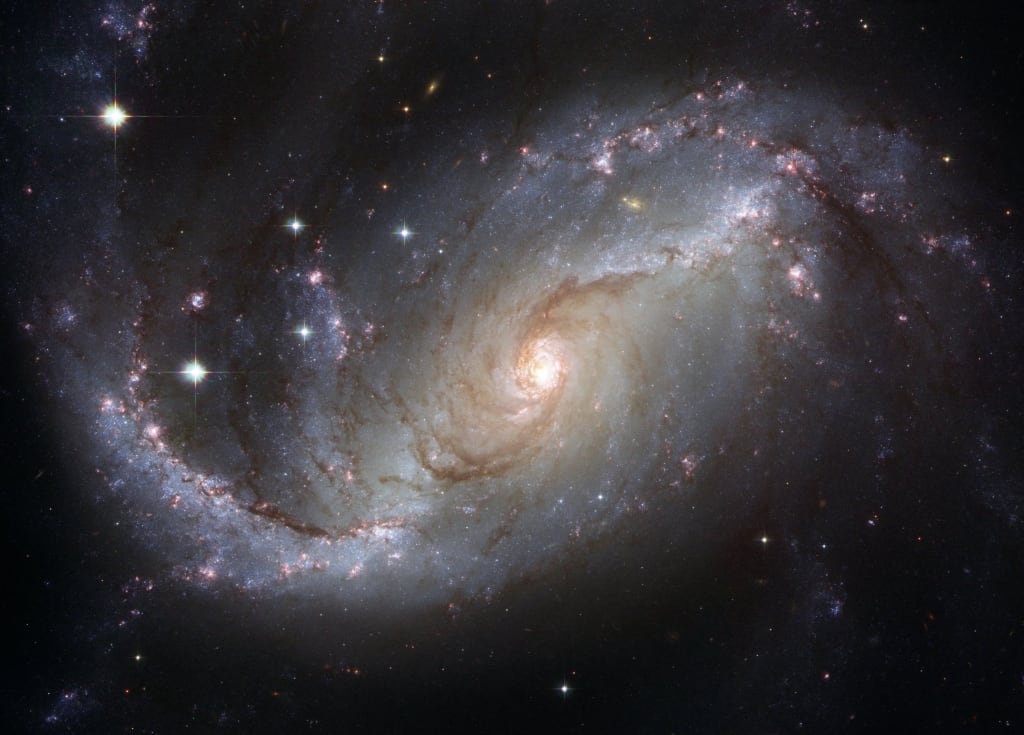The Cosmic Mosaic: Unraveling the Composition and Enigmas of the Universe
Exploring Matter, Dark Matter, Dark Energy, Exotic Entities, and the Quest for Cosmic Unity

It seems like you're asking about the concept of the universe and its composition. The universe is an incredibly vast and complex entity that encompasses all of existence, including galaxies, stars, planets, and everything in between. Understanding the composition of the universe involves delving into the realms of astronomy, astrophysics, and cosmology. Let's explore this topic in detail.
The composition of the universe is a subject that has captivated human curiosity for centuries. In modern times, advances in observational technology and theoretical models have allowed scientists to gain deeper insights into the makeup of the universe. One of the most significant breakthroughs in this regard is the understanding that the universe is composed of a diverse array of components, including matter, energy, and even mysterious entities that have yet to be fully understood.
Matter: The Building Blocks of the Universe
Matter is the fundamental substance that makes up everything we see, touch, and interact with in the universe. It is composed of elementary particles such as protons, neutrons, and electrons. These particles combine to form atoms, which are the basic units of matter. Elements on the periodic table are made up of different combinations of these atoms.
The most abundant element in the universe is hydrogen, followed by helium. These two elements were formed shortly after the Big Bang, which is believed to be the event that marked the beginning of the universe's expansion. The heavier elements, like carbon, oxygen, and iron, were created through nuclear processes in the cores of stars or during supernova explosions.
Dark Matter: An Enigmatic Force
Despite the prevalence of matter we can observe, scientists have discovered that there must be a substantial amount of "dark matter" in the universe. Dark matter doesn't emit light or energy that we can directly detect, which makes it challenging to study. Its presence is inferred from its gravitational effects on visible matter and the cosmic microwave background radiation.
The nature of dark matter remains one of the most intriguing mysteries in modern astrophysics. Various candidates for dark matter particles have been proposed, but its true identity remains elusive. Researchers continue to explore its properties through experiments and observations to shed light on this enigmatic component of the universe.
Dark Energy: Driving the Universe's Expansion
Dark energy is another puzzling component that shapes the universe's destiny. Unlike dark matter, dark energy doesn't exert gravitational effects on matter; instead, it influences the expansion of the universe itself. In the late 20th century, astronomers discovered that the universe's expansion is accelerating, contrary to what was initially expected. To explain this accelerated expansion, the concept of dark energy was introduced.
One of the most prevalent models for dark energy is the cosmological constant, associated with the work of Albert Einstein. It suggests that space itself contains energy, contributing to the universe's expansion. However, the exact nature of dark energy remains speculative, and ongoing research seeks to unravel its fundamental properties and implications for the fate of the universe.
Cosmic Microwave Background Radiation: A Glimpse into the Early Universe
The cosmic microwave background radiation (CMB) is another vital piece of the puzzle when it comes to understanding the universe's composition. This faint glow of radiation permeates the universe and is considered the afterglow of the Big Bang. It provides crucial information about the universe's early conditions and its subsequent evolution.
By studying the temperature variations in the CMB, scientists can discern the distribution of matter and energy in the early universe. These variations are linked to the formation of galaxies and clusters of galaxies over billions of years. The precise measurements of the CMB have provided valuable insights into the composition and evolution of the universe.
Exotic Entities: Black Holes and Neutron Stars
Beyond the familiar components of matter and energy, the universe is home to exotic and extreme objects. Black holes, for example, are regions where the gravitational pull is so strong that nothing, not even light, can escape from them. They form when massive stars collapse under their own gravity.
Neutron stars are another fascinating outcome of stellar evolution. They are incredibly dense remnants of massive stars that have undergone supernova explosions. A teaspoon of neutron star material would weigh billions of tons on Earth. Neutron stars can also give rise to phenomena like pulsars, rapidly rotating neutron stars that emit beams of radiation.
The Quest for a Unified Theory
In the realm of particle physics, scientists strive to uncover a unified theory that explains the fundamental forces and particles of the universe. The Standard Model of particle physics has been successful in describing the electromagnetic, weak, and strong nuclear forces, as well as the particles that make up matter. However, it does not encompass gravity or account for phenomena like dark matter and dark energy.
Efforts to develop a "Theory of Everything" that unifies all the forces and particles in the universe are ongoing. String theory and other theoretical frameworks aim to bridge the gaps between quantum mechanics and general relativity, potentially providing a deeper understanding of the universe's composition and behavior.
In conclusion, the composition of the universe is a complex tapestry woven from a variety of elements, energies, and mysterious entities. Matter, dark matter, dark energy, and exotic cosmic objects like black holes and neutron stars all contribute to the rich and intricate fabric of the cosmos. While we have made tremendous strides in understanding the universe's composition, many mysteries remain, inviting scientists and researchers to continue exploring and unraveling the enigmas of the cosmos.
About the Creator
Word Weaver
By reading more from me, you can learn new things and gain valuable insights. So, let's explore together!






Comments
There are no comments for this story
Be the first to respond and start the conversation.